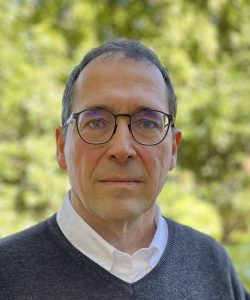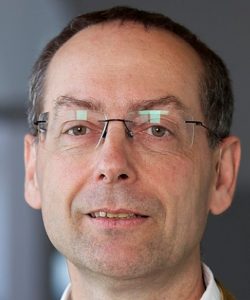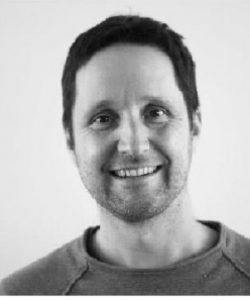Science
The atmospheric science AMR is based on has been published in 2017 by Franz Oeste, Renaud de Richter, Thingzhen Min and Sylvain Caillol in their groundbreaking paper named “Climate engineering by mimicking natural dust climate control: The iron salt aerosol method” (11). This paper inspired two international groups of scientists to meet regularly on Zoom and speak about this new possibility.
The first group started in 2020, it was a US NGO called “Restore Our Climate” (ROC). Clive Elsworth was the founder, and Renaud de Richter, Franz Oeste and Peter Wadhams, who you find portrayed below, were regular attendees of ROC. At that time the method was called the Iron Salt Aerosol (ISA) method. ROC was dissolved in 2021.
The second group was also a US NGO, named “Methane Action” (MA), which met regularly in 2021 – 2023. It was founded (among others) by our shareholder Peter Fiekowsky, who you find portrayed Shares. In 2023 it merged with Spark Climate, which is currently the main center of action regarding methane removal in the United States. In one meeting of MA in 2022 the method was renamed “Enhanced Atmospheric Methane Oxidation” (EAMO). Compare Wikipedia for more detail.
More recently a third group, which covers all methods to cool the climate, has emerged. Its name is Healthy Planet Action Coalition, or HPAC. AMR supports the diversity of cooling methods with the webpage Cool-Planet.Earth, which was born from a discussion in HPAC.
These groups worked the field of methane removal for some years and had or have dozens of scientists, journalists and executives board. Unlike these non-profit organizations, which concentrate on research, AMR plans to actually build methane removal technology. Such endeavour is hard to realize by a non-profit organization, so in 2021 we created AMR AG to do it.
EAMO is nature-based technology. The energy in EAMO comes from sun and wind. One exception is the (fuel-driven) planes we plan to use for dispersion of the catalyst. But the main process is not the dispersion, it is the actual oxidation of methane. The catalyst helps the process happen but is not changed by it. Both Natural as well as Enhanced Atmospheric Methane Oxidation are done 100% by nature itself, by the identical process. That’s the main reason why we can say that the process is safe, natural and efficient. It is not new, it happened for millions of years.
Mankind is virtually destroying the planet it lives on – Nature is the only power which can heal it. With EAMO we support nature in restoring our climate. Please find a more conceptual view of this on our third website: GeoRestoration.Earth.
Please find all references to scientific literature regarding AMR here.
Scientific Board
Franz Oeste

Franz Oeste, developer and co-patent-holder of the iron salt aerosol (ISA) method of depleting CO2, methane and other short-lived greenhouse gases; he is the lead author of the primary peer-reviewed article on ISA, and also lead author on a new major paper on natural carbon transport mechanisms that Sir David King is calling a “landmark” paper, and is interested in sponsoring for publication by the Royal Society.
Oeste found the inspiration for what became the ISA method when he tried to help Bangladesh villagers whose wells were arsenic-polluted, and realized the connection between methane and other pollutants.
In his spare time, he hosts a museum featuring the unusual chemical geology of his region and its rocks (in photo), weathered by the same process (only at the bottom of the ocean) that is featured in his latest paper. He has a Diplom-Ingenieur Chemical Engineering from the former State School of Engineering, Essen, Germany.
Renaud de Richter

Dr. Renaud de Richter is a chemical engineer and holds a PhD in organic chemistry from the ENSC
Montpellier, France. Renaud performed a post-doctorate at the School of Pharmacy in Minneapolis, MN, USA (1990). Dr. de Richter was manager of R&D (1991–1993) at a pharmaceutical start-up in Paris, France. Later, Renaud has been manager of a team of 32 scientists and technicians of a physical-chemistry laboratory(1998-2007).
He and his co-authors were the first to propose two different methods to remove at a climatically significant scale several greenhouse gases, such as methane + nitrous oxide + chloro-fluoro-carbons (May 2017), methane + tropospheric (surface) ozone + soot (August 2017), methane and carbon dioxide (March 2021).
Among Renaud’s other key contributions to science are his proposals to improve solar updraft chimneys in order to produce CO2 free renewable energy and fresh water in arid regions. View the list of Renaud’s scientific peer-reviewed publications.
Prof. Dr.-Ing. Tobias Plessing

Tobias Plessing is the head of the Institute of Hydrogen and Energy Technology at Hof University of Applied Sciences in Bavaria, Germany.
The institute is building our prototype for a disperser of ferric chloride.
For more information on Tobias please refer to
Dr. Peter Wadhams

Dr. Peter Wadhams, ScD, has spent the last 50 years researching sea ice and ocean processes in the Arctic and the Antarctic. His work has focused on expeditions and measurements in the field, involving more than 50 expeditions to both polar regions, working from ice camps, icebreakers, aircraft, and, uniquely, Royal Navy submarines (6 submerged voyages to North Pole ). He is Professor of Ocean Physics (Emeritus since 2015) and is the author of numerous publications on dynamics and thermodynamics of sea ice, sea ice thickness, waves in ice, icebergs, ocean convection and kindred topics. His book, A Farewell to Ice, convincingly explains the consequences of the loss of the planet’s ice. At present he is a visiting professor at the Polytechnic of Turin, Italy.
Thomas Oppenländer

Prof. Dr. Thomas Oppenlaender studied chemistry at the University of Würzburg (Germany). He received his doctoral degree (Dr. rer.nat.) in 1984 for his work on 185-nm-photochemistry of azoalkanes in solution, as a member of the research group of Waldemar Adam. During the following year he was a postdoctoral fellow at the Colorado State University (Fort Collins, USA) in the group of Albert I. Meyers, being involved in asymmetric synthesis of dihydropyridines and NADH mimics. From 1985 to 1991 he worked for F. Hoffmann-La Roche in Basle (Switzerland). Here, he was engaged in research on drug phototoxicity and on the photochemical production of fine chemicals. Since 1991 he is a full professor at the Hochschule Furtwangen University (HFU, Germany). His main research interests concentrated on the potentials of modern and mercury-free excimer lamps (excilamps) for photochemical purification and detoxification of water and air. He is an author of about fifty peer-reviewed scientific publications. He also published a book on “Photochemical Purification of Water and Air, Advanced Oxidation Processes (AOPs): Principles, Reaction Mechanisms, Reactor Concepts”, Wiley-VCH,Weinheim, 2003 (https://scholar.google.de/citations?hl=de&pli=1&user=KpEKY24AAAAJ). From March till August 2007 he was a DAAD Short-Term Lecturer at the Department of Civil and Environmental Engineering of the University of Alberta Edmonton (Canada). He retired from HFU in 2020, being now active as an artist in acrylic painting (Abstract Expressionism).
Sev Clarke

William Severn “Sev” Clarke is an independent, Australian inventor who has been working for some fifteen years on improving ways to grow phytoplankton and to process biomass. He was awarded patents in both fields. Documentation for much of his climate work is now curated at https://www.noac.info/Method.aspx
He took a double degree from Melbourne University, majoring in Chemistry, Economics and History, followed seven years later with a Stanford MBA.
He has worked at senior levels in the industries of Food & Packaging, Pharmaceuticals, and Defence – mainly in the functions of information technology, finance, corporate planning, administration, procurement, research & development. He was the inaugural Director of Knowledge Management in the Australian Defence Organisation.
For the past fifteen years he has worked full time on developing concepts and inventions to restore the climate and oceans to health, plus those designed to improve the sustainability of various industrial processes and energy storage. A ruthless critic of poorly thought out ideas, typically, he will often find ways to make them work by bringing in advances from widely disparate fields.
Prof. Dr. Wolfgang Francke

Prof. Dr. Wolfgang Francke is a civil engineer who graduated from TU Darmstadt, Germany (1989). Wolfgang received his doctorate in steel construction (1997) at the TU Darmstadt. He has been Professor for Steel and Timber Construction at the HTWG Konstanz since 1999 and has headed the Laboratory for Structural Dynamics there since 2014. Since his studies Wolfgang has been involved in areas with special challenges, e.g. feasibility studies for the Stratospheric-observatory for infrared astronomy SOFIA, Very Large Telescope VLT, wooden car parks and the realization of wood in multi-storey construction as an important response to climate change (Studentenwohnheim Paradies, Konstanz, u. a. Holzbaupreis Baden-Württemberg 2006). Another important contribution was Wolfgangs participation at ECOLAR Solar Decathlon 2012 and his first place in the section “Engineering & Construction“.
Wolfgang also worked and published on the realisation of solar updraft towers as an important CO2-free renewable energy together with Oswald Petersen und Dr. Renaud de Richter.
Further detail on Wolfgang may be obtained here.
Prof. Dr.- Ing. Alexander Michalski

Prof. Dr.- Ing. Alexander Michalski, born 1976 in Stuttgart, Germany is a civil engineer with 18 years of profound experience in the design, analysis and construction of light-weight structures.
Disciplines: Structural Mechanics/Dynamics in Engineering
He is a former member of the Chair of Structural Analysis, Technical University of Munich and holder of a Ph.D. degree on the numerical analysis of wind-excited movements of membrane structures. Since 2008, he is a founding partner and CEO of the international operating structural engineering company named str.ucture GmbH, based in Stuttgart, specialized in the analysis and design of special and lightweight structures. He has experience as a teaching Assistant at the Technical University Vienna, Austria, and holding a full professorship at the University of Applied Sciences Konstanz, Germany (https://www.researchgate.net/profile/A_Michalski)

